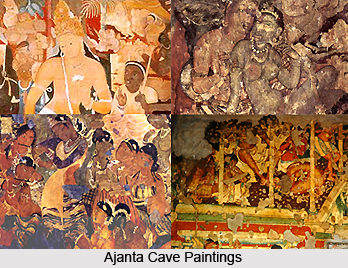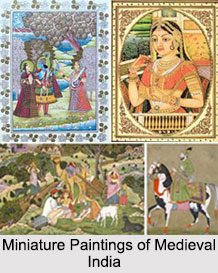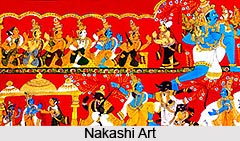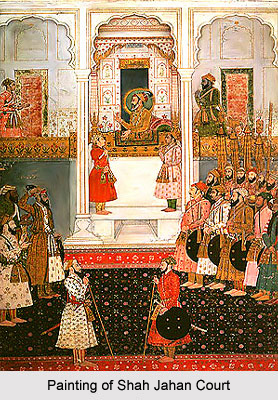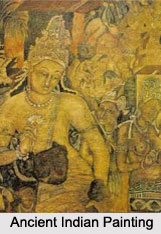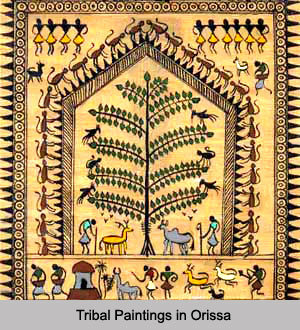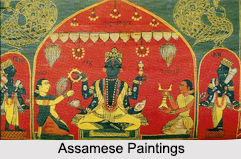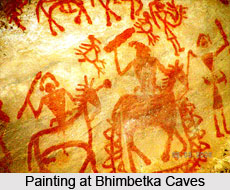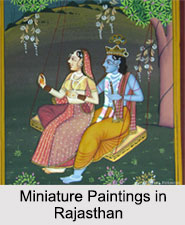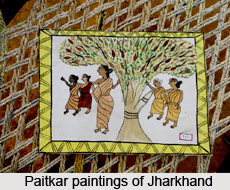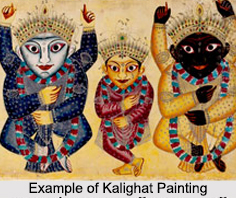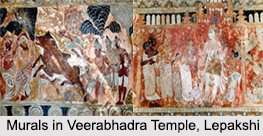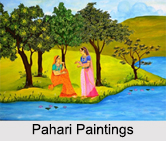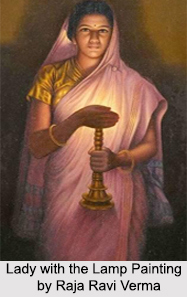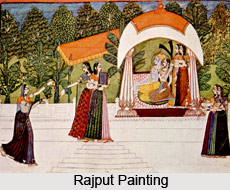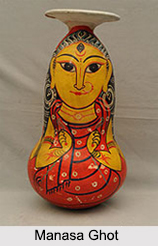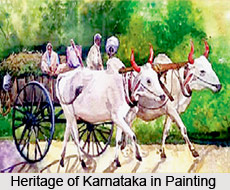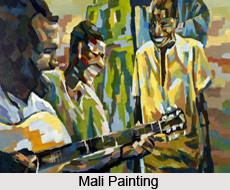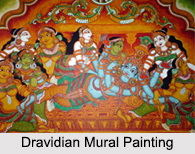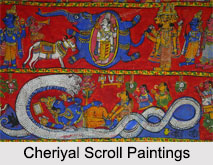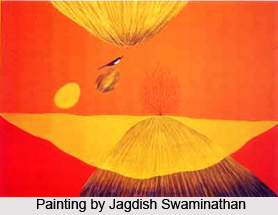 Jagdish Swaminathan was born on June 21st, 1929 in Shimla. He was the founder member of Group 1890. He gave Indian art a whole new direction as he began to work towards a new set of values based on an indigenous identity. His paintings reflected his own mystical bent of mind and showed his closeness to the European painter Paul Klee. He was a member of the Communist Party of India.
Jagdish Swaminathan was born on June 21st, 1929 in Shimla. He was the founder member of Group 1890. He gave Indian art a whole new direction as he began to work towards a new set of values based on an indigenous identity. His paintings reflected his own mystical bent of mind and showed his closeness to the European painter Paul Klee. He was a member of the Communist Party of India.
He wrote that: "cultural experiences and activity in India is a multi-level phenomenon - and these levels are often mutually independent and non-interacting - it is the urban and the so-called modern sense of contemporarily that appears to dominate the scene and thus to distort the real perspective".
Swaminathan tried to give the tribal expression a proper place in the global art. He was an artist who defied conventions. His intense desire to capture the world in all its child like simplicity of form and freshness is something that was kept intact with Swaminathan through his years as an artist. His early paintings show the richness and raw vitality of cave paintings. He believed that `folk and tribal art` was as contemporary as what was being called contemporary art at that time. The two triangular forms that appear in many of his paintings are very interesting. His well ordered graphical and brush paintings gave way to tribal art gradually. Later on Swaminathan returned to the highly layered and textured canvas with a more muted, subtle colour palate. He was an artist with the austere detachment of a hermit. His use of flat colours and spaces in his early work is reminiscent of the Indian miniature.
His paintings explored the pictorial possibilities of his limited imagery which were emblematic of elements necessary for man`s survival on earth. In his paintings of the `90`s, he broke away from his earlier well ordered colour-geometry and brush paintings. He died in 1994. He brought the tribal art of Central India into contemporary focus through Bharat Bhavan. He was among the first who bagged Nehru Fellowship, through his thesis titled `Relevance of the Traditional Neumen to Contemporary Art` though unfinished, it was the beginning of understanding the tribal psyche.
